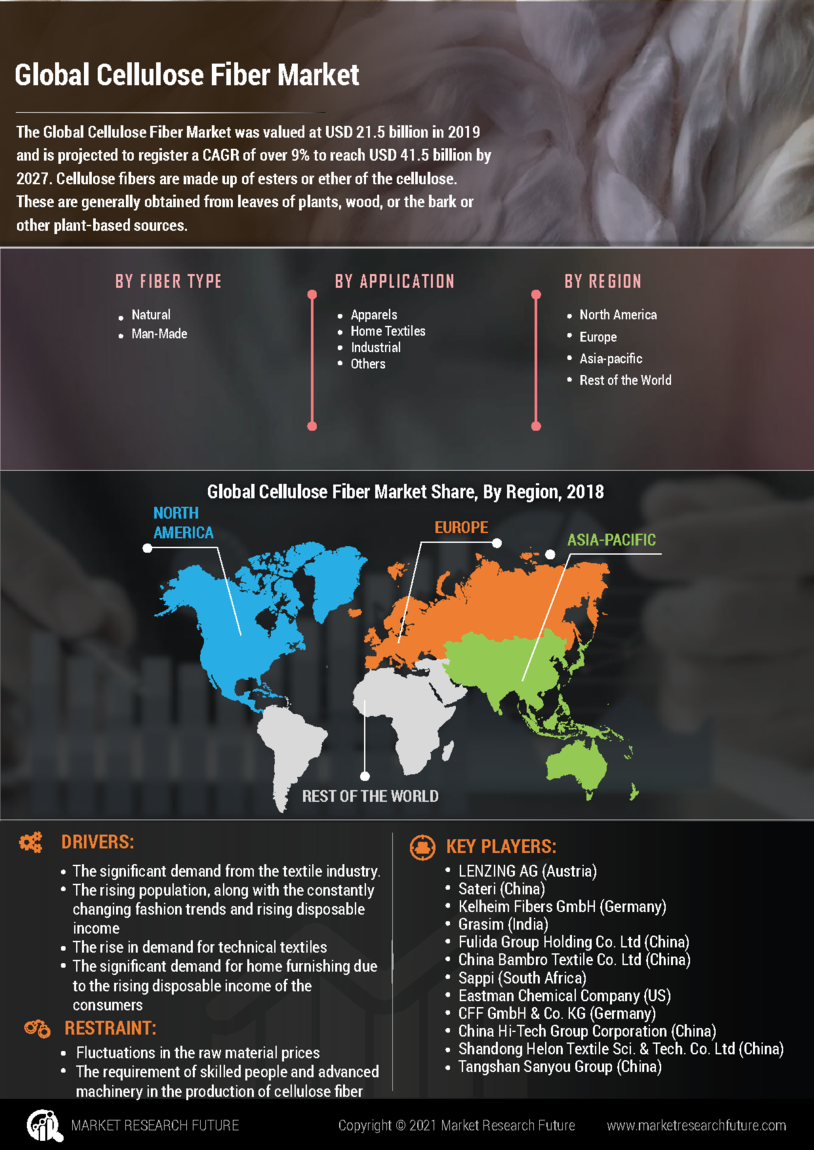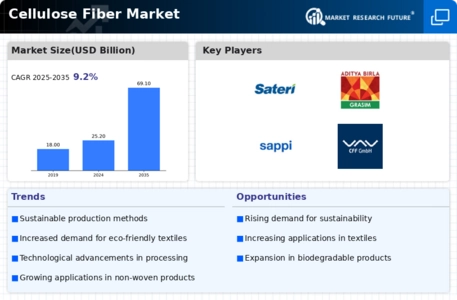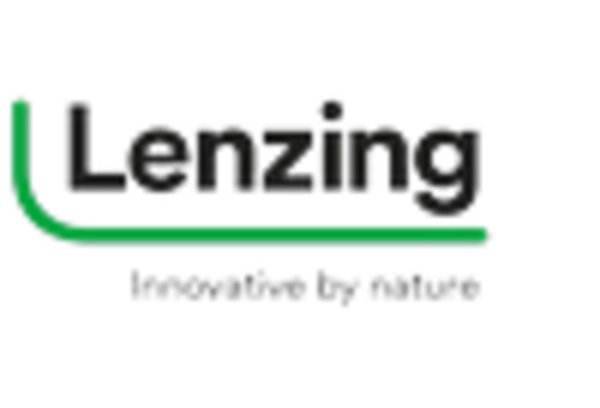Regulatory Support
Regulatory frameworks promoting the use of sustainable materials are likely to bolster the Cellulose Fiber Market. Governments worldwide are implementing policies aimed at reducing plastic waste and encouraging the adoption of biodegradable alternatives. Such regulations create a favorable environment for cellulose fibers, which are naturally derived and environmentally friendly. The European Union, for instance, has introduced directives aimed at minimizing single-use plastics, indirectly supporting the cellulose fiber market. As these regulations become more stringent, manufacturers may increasingly turn to cellulose fibers as a compliant and sustainable option. This regulatory support not only enhances market growth but also encourages innovation within the cellulose fiber industry, as companies strive to meet evolving standards and consumer expectations.
Technological Innovations
Technological advancements in the production and processing of cellulose fibers are significantly influencing the Cellulose Fiber Market. Innovations such as improved extraction methods and enhanced processing techniques have led to higher quality fibers and reduced production costs. For instance, the introduction of enzymatic treatments has streamlined the production process, making it more efficient and environmentally friendly. The market is expected to witness a surge in demand for high-performance cellulose fibers, particularly in textiles and composites, as these technologies evolve. Furthermore, the integration of digital technologies in manufacturing processes may enhance supply chain efficiency, thereby increasing the competitiveness of cellulose fibers against traditional materials. This technological evolution is likely to play a crucial role in shaping the future landscape of the cellulose fiber industry.
Sustainability Initiatives
The increasing emphasis on sustainability appears to be a primary driver for the Cellulose Fiber Market. As consumers and manufacturers alike prioritize eco-friendly materials, cellulose fibers, derived from renewable resources, gain traction. The market for cellulose fibers is projected to reach approximately 3.5 billion USD by 2026, reflecting a compound annual growth rate of around 10%. This shift towards sustainable practices not only aligns with consumer preferences but also encourages companies to innovate in their production processes. The cellulose fiber industry is likely to benefit from regulations promoting sustainable materials, further enhancing its market position. As industries seek to reduce their carbon footprints, cellulose fibers present a viable alternative to synthetic fibers, which are often petroleum-based and environmentally detrimental.
Diverse End-Use Applications
The versatility of cellulose fibers across various industries serves as a significant driver for the Cellulose Fiber Market. These fibers find applications in textiles, automotive, construction, and personal care products, among others. The textile sector, in particular, is experiencing a notable shift towards cellulose fibers due to their biodegradability and comfort. The demand for cellulose-based textiles is projected to grow, with estimates suggesting a market size of over 1.2 billion USD by 2025. Additionally, the automotive industry is increasingly incorporating cellulose fibers in composite materials to enhance strength while reducing weight. This trend indicates a broader acceptance of cellulose fibers in high-performance applications, thereby expanding the market's reach and potential.
Consumer Awareness and Demand
Growing consumer awareness regarding environmental issues and the benefits of sustainable products is driving demand in the Cellulose Fiber Market. As consumers become more informed about the impact of their choices, there is a noticeable shift towards products made from renewable resources. This trend is particularly evident in the fashion and textile sectors, where consumers are actively seeking out cellulose-based alternatives to synthetic fibers. Market Research Future indicates that approximately 60% of consumers are willing to pay a premium for sustainable products, which bodes well for the cellulose fiber industry. This heightened demand encourages manufacturers to expand their offerings and invest in sustainable practices, thereby fostering a more robust market environment. As consumer preferences continue to evolve, the cellulose fiber industry is poised to capitalize on this growing trend.


















Leave a Comment